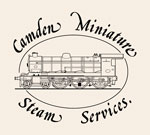The Broad Gauge Engines of the Great Western Railway Part 4 : 1853-1874
Part 4 of this series covers the period 1852-1874, which was one both of development and turbulence. During this time, the GWR’s broad gauge mileage grew to its greatest extent and then rapidly withered, so that by the autumn of 1874, with the exception of a few short branch lines, it remained only on the ‘mixed gauge’ main line between London and Bristol, acting as a link with the then still independent broad gauge railways of the South West of England.
All taken over or worked by the GWR by 1878, the locomotives of these will be studied in the next part of this series. In this same period, Daniel Gooch introduced some of his most successful broad gauge classes, yet in 1855, the firm of Beyer, Peacock & Co. also built his first design of standard gauge express engines. Gooch resigned, acrimoniously, in 1864, only to be reappointed Chairman of the GWR in 1865. Meanwhile, his successor as Locomotive, Carriage & Wagon Superintendent, Joseph Armstrong, had to grapple with the decline of the broad gauge alongside the need to provide increased manufacturing and repair facilities for engines, carriages and wagons.
This he achieved, with the significant enlargement of Swindon Works between 1864 and his untimely death in 1877. This then is the history of the engines constructed during this period, along with the development of the workshops at Swindon where so many of them were built, and also the expansion of New Swindon, where the workforce lived. It is, too, the stories of those men who took over the mantle of Isambard Kingdom Brunel, whose great vision acted as the motivation of them all.
264 pages. 16 pages in colour.
Vol 1 - Now out of print
Vol 2 - Here
Vol 3 - Here









